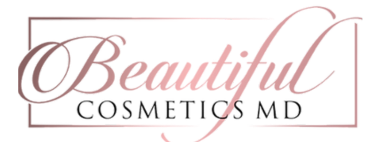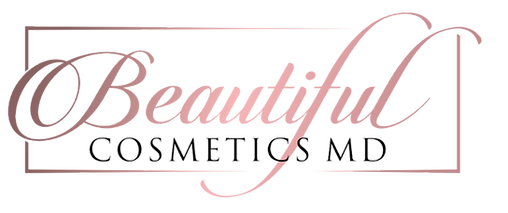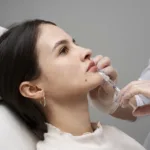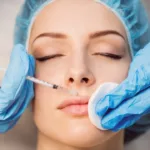PRP hair restoration has been more well-known recently as a potentially effective treatment for hair loss. Platelet-Rich Plasma (PRP) therapy involves using a patient’s own blood to stimulate hair follicles’ growth and promote hair regrowth. During the procedure, a small amount of blood is drawn, processed to concentrate platelets, and then injected into the scalp. Thick, healthy hair is the outcome of the platelets’ growth factors stimulating and nourishing the hair follicles. This educational blog post explores the science of platelet-rich plasma (PRP) hair regeneration and how well it works to cure hair loss.

Key Takeaways:
- Platelet-rich plasma (PRP) hair restoration involves using the patient’s own blood to stimulate hair growth.
- Creation factors found in PRP support the health of hair follicles and encourage the creation of new hair.
Blood must be drawn from the patient, separated into platelet-rich plasma by centrifuging the mixture, and then injected into the scalp. - PRP treatments are typically done in a series over a few months to achieve optimal results.
- PRP hair restoration is a non-surgical procedure with minimal downtime and low risk of side effects.
- Patient selection is crucial for the success of PRP hair restoration, as not everyone may be a good candidate for the treatment.
- Results from PRP treatments can vary from person to person, but many patients experience improved hair density and thickness.
Understanding PRP Hair Restoration
There’s no denying that hair loss can be a distressing experience for many individuals. Fortunately, new treatments like PRP therapy in Corona, CA have been made possible by technological developments in medicine. PRP hair restoration is becoming more and more well-liked as a secure and efficient way to stop hair loss and encourage new hair growth.
What is PRP?
On the surface, PRP may sound complex, but the concept behind it is quite simple. A little amount of the patient’s blood is drawn during the non-surgical platelet-rich plasma (PRP) technique. And the blood is processed to extract a high concentration of platelets. Growth factors included in these platelets are essential for tissue regeneration and repair. PRP activates dormant hair follicles when injected into the scalp, encouraging the development and thickness of new hair.
Restoration of hair through PRP therapy typically involves multiple sessions scheduled over several months to achieve optimal results. This treatment is considered safe and minimally invasive, making it a popular choice for individuals looking to address hair loss without undergoing surgery.
The Science Behind PRP for Hair Growth
Scientific studies highlighting the regenerative qualities of platelets support the restoration of hair using PRP therapy. Improved hair growth and density are the result of increased hair follicle cell proliferation, which is aided by growth factors found in platelets. Hair thinning or loss sufferers can find a powerful cure with PRP, as it uses the body’s own healing processes.
Preparation and Initial Consultation
On the road to PRP hair restoration, the first crucial step is the preparation and initial consultation. This entails scheduling an appointment with a licensed healthcare professional to go over your medical background, prescription drugs. And any current health issues that might influence the course of therapy.
The medical professional will evaluate your suitability for PRP therapy and go over the possible results during this session. In order to assess the severity of your hair loss and develop a customized treatment plan for you, they might also do a scalp examination.
The Step-by-Step PRP Process
Consultation Table:
| Step | Description |
| 1 | Medical history review and scalp examination. |
| 2 | Blood draw to collect a small sample for PRP preparation. |
| 3 | Centrifugation of the blood sample to isolate platelet-rich plasma. |
| 4 | Injection of PRP into the targeted areas of the scalp. |
Plus, the healthcare provider will provide you with post-treatment care instructions to ensure optimal results and minimize any potential side effects. The number of sessions needed may vary based on individual response to the treatment and the severity of hair loss. Rest assured, the PRP procedure is a safe and effective option for promoting hair growth and restoring confidence in individuals experiencing hair loss.
Efficacy And Results
Your journey towards PRP hair restoration may come with questions about its efficacy and the results you can expect. A good outcome will require you to understand the science behind the surgery and to lower your expectations.
Clinical Studies And Their Findings
To gauge the effectiveness of PRP therapy for hair restoration, several clinical studies have been conducted. These trials have shown promising results in terms of boosting hair density and stimulating hair creation for patients with various types of hair loss. According to research findings, PRP injections in Chino, CA may be able to stimulate hair follicles, prolong the development phase of the hair cycle. And increase the overall thickness and volume of hair.
PRP hair restoration clinical trials have frequently yielded positive results, with many participants reporting considerable increases in hair growth and quality. Even though individual results may vary, everyone agrees that PRP therapy can be a helpful tool in the fight against hair loss and to promote hair growth..
Realistic Expectations And Timeframe For PRP Outcomes
Efficacy of PRP therapy largely depends on multiple factors such as the extent of hair loss, underlying causes, individual response to treatment. And consistency in following the recommended treatment plan. It’s critical to set reasonable expectations and accept the possibility that significant progress may not be seen right away.
The full benefits of PRP hair restoration may typically be seen after a series of treatments spaced over several months. Patients are advised to be patient and committed to the process. As gradual improvements in hair growth and quality can be expected over time. Consistency in undergoing treatment sessions as recommended by your healthcare provider is key to achieving optimal results.
PRP Versus Medications
An increasing number of individuals are turning to PRP therapy over traditional hair loss medications like minoxidil or finasteride. While medications may help slow down hair loss, PRP therapy actively promotes hair growth by stimulating the hair follicles.
Furthermore, PRP is a safer alternative to medication because it is a natural treatment made from the patient’s own blood, minimizing the possibility of negative effects. Furthermore, PRP therapy offers a permanent solution because it tackles the root cause of hair loss and promotes the growth of healthy new hair. On the other hand, taking medication could need a lifetime commitment and not always provide the desired benefits for each person.
PRP Versus Hair Transplant Surgery
Versus hair transplant surgery, PRP therapy offers a non-invasive and less expensive alternative for individuals seeking hair restoration. While hair transplant surgery involves surgical procedures to transplant hair follicles from one area of the scalp to another, PRP therapy stimulates natural hair growth using the patient’s own blood components.
Maintenance And Post-Procedure Care
Once again, let’s investigate the important aspect of maintenance and post-procedure care when undergoing PRP hair restoration. Ensuring the efficacy and longevity of the therapeutic results depends on this phase. People can get the most out of PRP therapy and encourage healthy hair development by adhering to the recommended guidelines and suggestions.
Post-Treatment Recommendations
The post-treatment stage is essential for the best possible recovery and results.. It is recommended to avoid washing the hair for at least 24 hours after the PRP procedure to allow the scalp to fully absorb the platelet-rich plasma. Additionally, individuals should refrain from using harsh chemical hair products or styling tools that may irritate the scalp. It’s critical to adhere to the aftercare recommendations given by your doctor in order to speed up the healing process and reduce the chance of infection.
Long-term Maintenance of Hair Growth
Recommendations for long-term maintenance of hair growth following PRP therapy involve adopting a healthy lifestyle that supports overall hair health. This entails maintaining hydration, managing stress levels, and consuming a balanced diet full of vitamins and minerals that are critical for healthy hair growth. Frequent scalp massages may enhance blood flow and promote strong hair follicles. Which may enhance the benefits of platelet-rich plasma (PRP) therapy.
Invest in high-quality hair care products that are chemical-free and kind to the scalp to take care of your hair. In addition, making regular follow-up appointments with your physician after PRP treatment sessions can help sustain the therapy’s efficacy and offer long-term benefits for hair growth.
Final Words
Hence, PRP hair restoration works by utilizing the growth factors in your blood to stimulate hair follicles, promoting hair growth and overall hair health. Promising outcomes in preventing hair loss and encouraging healthier, thicker hair have been observed with this minimally invasive method. PRP therapy is a safe and effective technique to harness the body’s own healing powers to help patients feel good about their appearance and regrow hair. To find out if PRP hair restoration is the best choice for you, speak with a licensed healthcare provider. This is the first step towards having a fuller head of hair.
FAQ
Q: What is PRP Hair Restoration?
A: PRP (Platelet-Rich Plasma) Hair Restoration is a non-surgical procedure that involves using the patient’s own blood to stimulate hair growth.
Q: How does PRP Hair Restoration work?
A: The procedure begins by drawing a small amount of the patient’s blood. Which is then spun in a centrifuge to separate the platelet-rich plasma. This PRP is then injected into the scalp to promote hair growth.
Q: What are the benefits of PRP Hair Restoration?
A: PRP Hair Restoration can help increase hair density, improve hair quality, and stimulate dormant hair follicles, resulting in thicker and healthier hair.
Q: How many sessions are required for PRP Hair Restoration to be effective?
A: It is recommended to have multiple sessions of PRP Hair Restoration, typically 3-4 treatments spaced 4-6 weeks apart, to see optimal results.
Q: Is PRP Hair Restoration suitable for everyone?
A: PRP Hair Restoration is generally safe for most people. But individuals with certain medical conditions or blood disorders may not be good candidates for this procedure. It is important to consult with a healthcare provider before undergoing PRP Hair Restoration.
Q: How long does it take to see results from PRP Hair Restoration?
A: While individual results may vary, most patients start to see improvements in hair growth and thickness within 3-6 months after completing the recommended treatment sessions.











